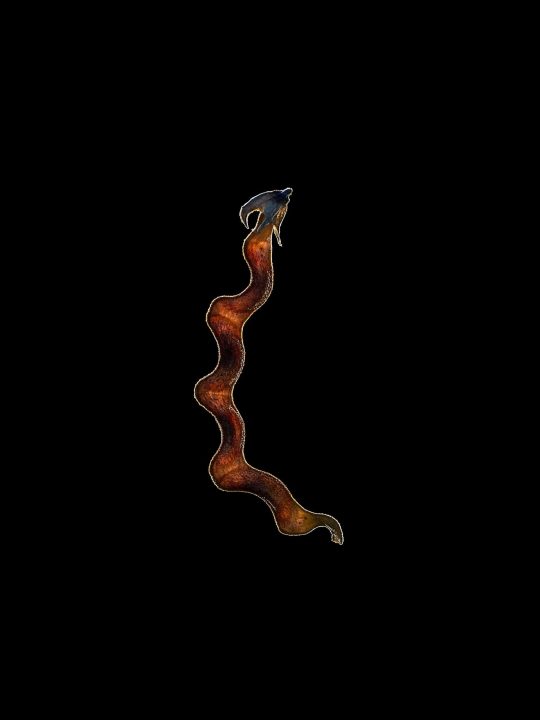#benthe
Text


Some sketches of my sw OCs :)
#star wars#my art#the clone wars#star wars oc#damn tumblr is reeeally bringing down the quality of preview images#xinyi#rainer#bite#delara#spyro#benthe#finch#paz
821 notes
·
View notes
Text

benthe / london fashion week 23
www.walnutwax.com
www.instagram.com/walnutwax
2 notes
·
View notes
Text
lentekind - van harte
een taart met kaarsjescadeautjes ook natuurlijkmet kleurrijke strikkenslingers en een dikke zoenmet dat alles vieren wij jouop deze veertiende jaardaghet meisje dat jij ooit waswordt prachtig om te zieneen heuse jonge dame numet je vriendje aan je zijdeje oefent ijverig de lessendie jij op school nu leertdoor ook thuis zo nu en daneten klaar te willen makenal bak je toch wel lievertaart gebak en…

View On WordPress
0 notes
Text



Indian Paintbrush..
232 notes
·
View notes
Photo

In ‘Seed Stories,’ Photographer Thierry Ardouin Unveils the Stunning Diversity of Plants
Fabaceae, Hippocrepis scorpioides Benth., Scorpion vetch
Image © Thierry Ardouin/Tendance Floue/MNHN
#thierry ardouin#photographer#tendance floue#mnhn#seed#plant#fabaceae#hippocrepis scorpioides benth#scorpion vetch#macro photography#nature
15 notes
·
View notes
Photo

Benthe de Vries by Ahmet Unver
28 notes
·
View notes
Text
Growing Busala (Dioscorea Hirtiflora Benth)
About Busala (Dioscorea Hirtiflora Benth)
Busala, also known as Lusala, is a widely available yam variety indigenous to southern Zambia. Grown as a vine, its tubers are popularly served as a relish. The yam is prepared similarly to meat courses. Hence, they are a unique alternative to vegetarian cuisine. Despite being a wild-growing delicacy, Busala has a plentiful supply in local markets. It is…

View On WordPress
0 notes
Text
Benthe de Wijs speelt Wijnpijn in Scala | Foodbar & Theater
Musicaltalent Benthe de Wijs speelt haar eerste voorstelling Wijnpijn van 4 t/m 15 oktober in Scala Amsterdam. Wijnpijn is een musicalcomedy waarin Benthe je meeneemt in de komedie en tragiek in het leven van een jonge vrouw. In 20 minuten laat je een lach en een traan door de diverse typetjes en prachtige nummers, die live begeleid worden door Hilmar Leujes.
Één drankje kan wel. Alhoewel twee…

View On WordPress
#Benthe de Wijs#Devin Hillenius#Francesca Paula#Hilmar Leujes#Rube van Tienen#Scala | foodbar & theater#Tapastheater
0 notes
Photo

bauhinia longipetala, benth., josé joaquim freire, século 18.
0 notes
Text
Benthomaar? Benth omaar?? Omaar ??? What is he, Middle Eastern??? Is that why Kalmaar hated him so much????
130 notes
·
View notes
Photo

Benthe by walnutwax
www.walnutwax.com
www.instagram.com/walnutwax
12 notes
·
View notes
Text
vrolijke muts
ik ken een heel lief meisje
niet eentje die gewoon is
maar speciaal de allerbeste
altijd vrolijkt zij mensen op
met haar ondeugende lach
terwijl zij lieve dingen zegt
het einde van de kindertijd
ze telt echt al dertien jaren
brengt haar in de tienertijd
waarin ze met vriendinnen
hele dagen vol mutsen mag
over van alles en over niets
zo mijmert zij stiekem soms
dat voor prins pannenkoek
zij de…

View On WordPress
0 notes
Text
Uncomfortable~

sooooooo... I have this idea that Carter and Benth have known each other for a while before the game, but their relationship is anything but friendly. Hellie and Cyan have no idea about anything, plus both ships only got involved in this problem by accident.

#jsab#just shapes and beats#jsab au#jsab cyan#jsab cube#jsab boat#jsab helicopter#H E L L I S R E A L#idk
56 notes
·
View notes
Text
More than Seaweeds
Mermaid's Herbal Compendium

Navigation: Masterlist✦Ask Rules✦Feedback Tips
Askbox✦Sources✦Paid Readings

Name: Basil
Scientific name: Ocimum selloi Benth.
Disclaimer: As English is not my native language, there may be some errors in scientific expressions. I am also using local resources.
TECHNICAL USAGE
History:
Due to the shape of its leaves (heart), it was considered a symbol of love in Italy and of mourning in Greece. (Portal São Francisco, 2016)
4,000 years ago, the Hindus, who were percussionists in the culture of basil, exported it to Egypt. (Portal São Francisco, 2016)
In the last century, basil was used by shoemakers to attenuate the smell of leather. (Portal São Francisco, 2016)
The name "basilicum" has its origin in the Greek "basilikós," which means "of the kings or royal," to indicate its nobility. The Greek botanist Theophrastus, in the 3rd century BC, defined basil as an herb of kings. (History of Ingredients, 2016)
Description:
Plant characteristics: Basil is an herbaceous plant grown in gardens and widely known throughout Brazil. It is characterized by the pleasant smell that is released from its leaves. It has a quadrangular stem, and the leaves are opposite, sharp, and abundant. The plant produces small white flowers arranged on an elongated axis, with secondary inflorescences formed on each axis. The corolla has four pieces, and the plant bears fruit with four dark nuclei. It is a meliferous plant. Basil can be propagated by seeds or cuttings taken from the branches. It thrives in fertile soils rich in organic matter, permeable, and with high temperatures. (Treatise on Medicinal Plants, 2014)
Propagation: Basil can be propagated by seeds or cuttings from branches. Basil seeds are sown in 200-cell expanded polystyrene trays containing commercial substrate and kept in protected cultivation. At 30 days after sowing, the seedlings have four definitive leaves and are suitable for transplanting. (PEREIRA; MOREIRA, 2011)
Cultivation: Seedlings can be planted in pots or nurseries throughout the year. For this, the beds must be well prepared, raised to a height of 15 cm. Use 150 g of well-tanned bovine manure per square meter of bed and mix well. Sow the seeds and cover with 0.5 cm of light soil or fine sawdust. The recommended spacing is 30 cm between lines and 30 cm between plants. Irrigate at least once a day, preferably in the early morning or late afternoon. After 60 days of planting in the beds, the first harvest can be made by cutting the plant at 20 cm from the soil. (PEREIRA; MOREIRA, 2011)
How to choose and where to find:
Fresh: Fresh bunches and pots of basil can be found in fairs, markets, and supermarkets. Choose branches with lush leaves that are not stained or wilted.
Dry: Dry basil can be found in supermarkets and specialty stores. Look for products in dark packaging, protected from light, to prevent loss of aroma. Check the expiration date.
How to Store:
Fresh:
Basil spoils quickly, but it can be packed in plastic packaging and dried for up to three days at most.
Chop the leaves and place them in a closed glass container with oil.
Dry: Store in a sealed container, away from light and humidity.
How to dry:
Buy two large bundles of basil, wash them well, and spread them on a clean cloth until dry.
Separate the leaves and make layers of leaves in a glass bowl, alternating with thin layers of coarse salt.
Cover the glass bowl with plastic wrap and leave it at room temperature.
Stir once a day for the first three days.
The dried basil can be used for up to two months. The leaves become dry, and the salt absorbs the aroma of basil. You can use only the leaves or also the coarse salt.
Chemical Composition:
Tannins: Tannins are astringent and hemostatic, and their therapeutic applications are related to these properties. They are mainly used in the tanning and paint industries. They are also used in laboratories to detect proteins and alkaloids and as antidotes in cases of poisoning by alkaloid plants.
Flavonoids: The therapeutic functions of flavonoids are not yet fully understood. The group is known for its anti-inflammatory, anti-allergic, and vasoprotective effects (treatment of thrombosis). Rutin and hesperidin are important flavonoids used in the treatment of capillary fragility.
Saponins: Saponoside glycosides are named for their ability to form abundant foam when agitated with water (from Latin "frog" = soap). They taste bitter and acrid, and drugs containing them are usually sternutatory (cause sneezing) and irritating to the mucous membranes. They are non-nitrogen compounds that dissolve in water, producing foaming solutions by decreasing the surface tension of the liquid. They also have the properties of emulsifying oils and causing hemolysis. The latter is due to the ability of the glycoside to combine with the cholesterol molecules present in the erythrocyte membrane, disrupting the internal-external balance and promoting the rupture of the cell, resulting in the release of hemoglobin.
Essential Oils:
o Thymol: It has carminative, anti-spasmodic, expectorant, and anti-inflammatory properties. It also has significant antiseptic potential.
o Methyl-chavicol: It has antimicrobial, anti-inflammatory, local anesthetic, and insecticidal activities.
o Linalool: It is used for its woody, floral, and refreshing aroma.
o Eugenol: It has anesthetic, bactericidal, antifungal, and flavoring properties, with a hot and spicy note.
o Cineol: It has decongestant and anti-inflammatory properties and gives a eucalyptus aroma.
o Pyrene
Herbal Actions:
Digestant: An herb that promotes good digestion.
Carminative: Herbs or essential oils that help the intestines release gas by relaxing gut spasms and increasing peristalsis to expel gas.
Sweetener: It has the ability to sweeten.
Aperientes: Aperientes herbs are mild laxatives.
Indications: Basil is beneficial for those who have difficulties in digestion, gas, heartburn, and headaches resulting from heavy or inadequate food. It facilitates the functioning of the intestines and acts as a diuretic. It is good for coughs, vomiting, and bad breath. Along with malva and sage, it helps in mouth infections.
Dosage: There is little information on the safe and effective dosage of basil. Usually, 10 to 20 ml of fresh basil leaf juice is used once a day, or teas can be made by infusing 2 grams of fresh basil or dried herb in boiling water twice a day.
Contraindications: Basil is not suitable for long-term use in children, and it should not be used by pregnant women in the first three months of pregnancy.
MAGICAL USAGE
Gender: Masculine
Planet: Mars
Element: Fire
Deities: Ares, Eros, Zeus, Apollo, Vishnu, and Krishna
Tarot Cards: The Empress, Justice, Six of Swords, Ten of Cups
Zodiac: Virgo, Scorpio, Sagittarius
Sabbath: Yule, Imbolc
Magical Uses (under observation of effectiveness): Basil is linked to love, health, exorcism, and clairvoyance in magical practices. Its fresh leaves can be used as a natural scent to attract passion. Hanging some branches around the house can protect the environment and bring permanent joy. In some ancient cultures, basil was placed on the chest of the dead as a symbol of a passport to paradise. Fun fact: There are over 64 types of basil. (GORI, 2021)
Therapeutic and Enchanted Recipes:
PROSPERITY TEA:
INGREDIENTS: 1 teaspoon of basil, 1 teaspoon of thyme.
PREPARATION: Heat the water for 10 minutes, then turn off the heat. Add the basil and thyme and let it steep for 15 minutes.
CLAIRVOYANCE TEA:
INGREDIENTS: 1 teaspoon of basil, 1 teaspoon of hibiscus.
PREPARATION: Heat the water for 10 minutes, then turn off the heat. Add the basil and hibiscus and let it steep for 15 minutes. Drink four sips before your divination practices, especially oracles.
MIX OF HERBS FOR LOVE:
INGREDIENTS: 1 cup of basil, 1 cup of rose petals and buds, 1/2 cup of patchouli leaves, 1/2 cup of lavender flowers, 2 tablespoons of dragon's blood.
PREPARATION: Place this herbal mixture in a bowl in your home to attract love.
HAPPY SIPS:
*This is a recipe that makes me feel really happy...
INGREDIENTS: Fresh basil leaves, fresh strawberries.
PREPARATION: Make a flavored water by adding as much basil and strawberry as your heart desires. Let it sit for a while (to taste) and drink it. I used to make this a lot when working at the office, and it made me feel fresh and happy.
Sources:
CUNNINGHAM, Scott. Enciclopédia das Ervas Mágicas do Cunningham. 1ª ed. São Paulo: Editora Alfabeto, 2021.
PRIETO, Claudiney. Rituais de Magia com o Tarô. 1ª ed. São Paulo: Editora Alfabeto, 2021.
GORI, Tânia. Herbologia Mágica. 2ª ed. São Paulo: Editora Alfabeto, 2021.
CABOT, Laurie; CABOT, Penny; PENCZAK, Cristopher. Tradução de Virginia Dalbo. Livro de Feitiços de Laurie Cabot. 3ª ed. São Paulo. Editora Alfabeto, 2021.
LADDY, Brianna. Apostila Magia das Ervas. 2019. Her Instagram
LADDY, Brianna. 25 Feitiços usando a Magia das Ervas. 2021. Her Instagram
MINHAVIDA. Manjericão alivia problemas intestinais e tem ação anti-inflamatória. Disponível em: https://www.minhavida.com.br/materias/materia-11744#:~:text=Existe%20pouca%20informa%C3%A7%C3%A3o%20sobre%20a,fervente%20duas%20vezes%20ao%20dia. Acesso em: 11 abr. 2021.
SOCIEDADE BRASILEIRA DE FARMACOGNOSIA. Taninos. Disponível em: http://www.sbfgnosia.org.br/Ensino/taninos.html. Acesso em: 11 abr. 2021.
PARODI, Lorenzo. MANJERICÃO. Disponível em: http://www.ingredientes.blog.br/. Acesso em: 11 abr. 2021.
PORTAL SÃO FRANCISCO. Manjericão. Disponível em: https://www.portalsaofrancisco.com.br/alimentos/manjericao#:~:text=Devido%20%C3%A0%20forma%20de%20suas%20folhas%2C%20(cora%C3%A7%C3%A3o)%2C%20era,atenuar%20o%20cheiro%20do%20couro. Acesso em: 11 abr. 2021.
GRANDI, Telma Sueli Mesquita. Tratado das plantas medicinais [recurso eletrônico]: mineiras, nativas e cultivadas. 1. ed. – Dados eletrônicos. Belo Horizonte: Adaequatio Estúdio, 2014. (Download the book HERE)
HOFFMANN, David. Tradução Euclides Luiz Calloni. O guia completo das plantas medicinais: ervas de A a Z para tratar doenças; restabelecer a saúde e o bem-estar. 1ª ed. São Paulo: Cultrix, 2017.
(CC) AstroJulia Some Rights Reserved
#astrojulia#astrology#witchblr#astroblr#all about astrology#astro community#astro observations#astrology notes#witch community#herbology#all about witchcraft#herbs#basil#spells
78 notes
·
View notes

